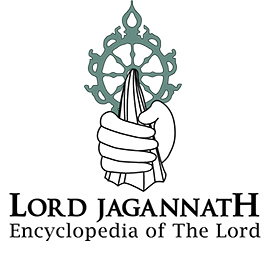Puri- Its Land, Legend and Lore
This land, Puri, the holy city of Sri Jagannatha, the Lord of the Universe, is variously known as Nilachala, Purosottama Kshetra, Sankha Kshetra, Sri Kshetra etc. which we find mentioned in the Puranas like Utkala Khanda of Skanda Purana, Brahma Purana, Narada Purana, Kurma Purana and Kapila Samhita, Niladri Mahodaya etc.
Before we are introduced to the land of Puri we may have a peep into its hoary past to have a glimpse of the spirit that hovers over the land from time immemorial.
What is that spirit that has been a great motivating factor of history that shapes the destiny of its peoples down through the ages? To know this we have to take a flight into the past along with the pristine glory of three hundred years of Ganga Rule in Orissa which have reached a high-water mark of political, religious and cultural history of Orissa.
“It was a period when there was a fusion of the Aryan culture of the North and the Dravidian culture of the South. The Aryan kings of the southern India encouraged cultured Brahmins of the north to settle in their countries. During the rule of the Cholas and the Chalukyas the Dravidian Civilization seems to have exercised a potent influence on the Aryan civilization of Orissa under the Gangas. Bonds of marriage of the Ganga dynasty with the Cholas and the Chalukyas made this fusion all the easier. The Ganga kings of Orissa built many temples after the model of the Cholas. On the whole the Oriya language, the Oriya architecture and the Oriya culture were all enriched by the Cholas and the Chalukyas.”
Buddhism, Jainism, Saivism and Vaishnavism all made their influence felt in Orissa. In spite of the teachings of great religious teachers of different faiths, the popular belief in Sri Jagannatha continued as ever. The old institutions of Sri Jagannatha absorbed something from each of these faiths and retained its identity through the vicissitudes of religious differences. Different Ganga kings acknowledged their adherence to different faiths but all of them tried to enhance the glory of Sri Jagannatha. In fact, the religious belief of the people centered round Sri Jagannatha, the nucleus of all faiths.
Puri by name means simply the city and seems never for have been in use before the British Conquest of Orissa, it is believed to be merely an abbreviation of Jagannatha- Puri, the city of Sri Jagannatha.
What the Vedas speak about this land? In the Rig Veda (X.155.3) there is this Mantra which means “The wood which floats (is an object of worship) beyond the yonder ocean is Apurusham …..”
It may be noticed here that this object of worship which was a piece of log floating in the ocean suggest probably that the people that worshipped it came with it, not by land but by sea.
This is a peculiar hymn in the whole of Rig Veda which speaks about the land and the people, significant it is, that even in those early days a wood or wooden image in a distant land was being worshipped perhaps as the soul (or Lord) of the universe.
Puri is the land of Lord Jagannatha, The primitive Savara deity hallowed with the Vedantic concept of Purusottama (the supreme self). The city of Puri is really Purusottama-Puri “The city of the supreme soul or the supreme self” and not a complete name by itself. But the concept that works behind Sri Jagannatha for which worldwide popularity is attributed, emanates from that of the “Patitapabana”- the redeemer of the fallen. “ The Lord of the Universe” designs, every year, to come out of the ritual curtains of the Aryan priests, with the divine intention to move and have its being in and around us, which is characterized by His appearance in the chariot popularly known as Ratha Yatra or Car festival.
Lord Jagannath during His sojourn throughout the car festival enjoys the devotion and worship of the descendants of the Savaras who are non-Brahmins which symbolizes a grand synthesis of socio-religio-cultural trends. He is the God both of the Aryans and the non-Aryans. It is most amazing to note how the concept behind this Hindu deity has slowly evolved out of the culture of the masses and bears the truth behind the religion of humanity. It is not really so much a God for monks and ascetics as of the common man and we shall see how the greatest of Gods has expressed His desire to embrace man and be one with the humanity breaking asunder all the barriers of caste, creed and color which form the crux of Hinduism in its orthodox form.
Thus Lord Jagannatha of Puri, the supreme God of the Hindu pantheon, represents a complete harmony and integration of different ethnic elements like Dravidian, Aryan and Mundarian which are characteristically contradictory religious forces acting and reacting through ages. He imbibes the spirit of integration and synthesis and serves as a living link between the two opposing forces that is Dravidian and the Tribal with the Aryan and above all the heretic faiths of Jainism and Buddhism with parental Hinduism. Sri Jagannatha of Orissa stands for a cult unique in itself which presents grand synthesis of diametrically opposite facts and forces and concepts, which have mingled into something which is the summum bonum of all religions and preaches the universal brotherhood as we see revealing through the immortal lives inscribed in Asoka’s edicts, “Sabu manisha mo praja“[All human beings are my children”].
